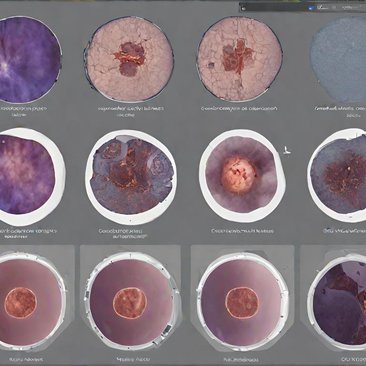Technology Goals
Git is a distributed version control system (VCS) that allows developers to track changes in their source code and collaborate efficiently across teams. Git is widely used in software development for managing project history, facilitating collaboration through branches and merges, and ensuring that code changes can be versioned, reverted, or merged without conflicts. Unlike centralized version control systems, Git gives every developer a complete local history of the codebase, enabling fast operations and allowing teams to work offline.
Git plays an essential role in the development process by allowing teams to manage parallel workstreams, test new features in isolated environments, and merge changes back into the main codebase without disruption. It helps maintain a complete history of changes, tracks every modification, and provides powerful tools for conflict resolution when multiple developers are working on the same codebase.
In our projects, Git is a cornerstone for version control, ensuring that the codebase remains organized, that changes are tracked accurately, and that collaboration across distributed teams is seamless.
Strengths of Git in Our Projects
Git’s distributed architecture allows each developer to have a full local copy of the project history, making operations such as branching, committing, and merging fast and efficient. This architecture also provides robust support for parallel development workflows, enabling developers to create branches to work on new features or bug fixes without disrupting the main codebase.
One of Git’s key strengths is its branching and merging model. Teams can create and manage multiple branches for different tasks—whether for new features, hotfixes, or experimental development—and later merge them back into the main branch with Git’s powerful merging capabilities. Git also supports rebasing, which helps clean up the project history and make the commit log more readable.
Git provides excellent integration with continuous integration/continuous deployment (CI/CD) pipelines, allowing automated testing, code reviews, and deployment processes to be triggered based on code changes in the repository. Platforms like GitHub, GitLab, and Bitbucket enhance Git’s functionality by providing cloud-based repositories, issue tracking, and collaboration tools that streamline the development process.
Comparison with Other Version Control Systems
Compared to centralized version control systems like Subversion (SVN), Git provides greater flexibility and speed. While SVN requires a central server to manage all changes, Git allows developers to work independently, syncing with the central repository only when needed. This makes Git particularly useful for large, distributed teams and projects where frequent offline development is required.
Compared to Mercurial, Git offers more control over how changes are merged and managed. Git’s branching model is generally more flexible, and while both tools provide distributed version control, Git’s ecosystem, community, and tooling are more widely adopted.
Real-world Applications in Client Projects
- Collaborative Software Development: In an enterprise software project, Git was used to manage a large development team spread across multiple time zones. Each developer worked on their own branches, and Git’s merging capabilities ensured that all changes were smoothly integrated into the main codebase without conflicts.
- Feature-based Branching: For a SaaS client, we used Git to implement feature-based branching. New features were developed in isolated branches, tested independently, and then merged into the release branch once stable. This improved the release process by reducing the likelihood of bugs in production.
- Code Review Automation: Integrated with GitHub’s pull request system, Git facilitated code reviews for a cloud-based application. Developers could submit changes in pull requests, allowing automated tests to run and reviewers to provide feedback before the code was merged into the production branch.
Client Benefits and Feedback
Clients have highlighted Git’s flexibility and ability to handle complex workflows as one of its biggest advantages. A client in the fintech industry reported improved collaboration between teams, as Git’s distributed model allowed developers to work independently while ensuring all changes were integrated smoothly.
For another client in e-commerce, Git’s branching and merging strategies helped organize the development process, enabling faster feature releases without interrupting ongoing development work.
Git’s compatibility with CI/CD systems was also a key factor for clients seeking automated testing and deployment pipelines, as code changes could trigger automated workflows that reduced the time between development and production deployment.
Conclusion
Git is an essential tool for modern software development, providing a flexible, efficient, and distributed system for managing source code. Its branching and merging capabilities make it ideal for collaborative development, while its distributed architecture ensures that development teams can work efficiently, even in distributed or offline environments. Whether managing large-scale projects or small teams, Git provides the control, speed, and reliability necessary for successful version control in any project.



